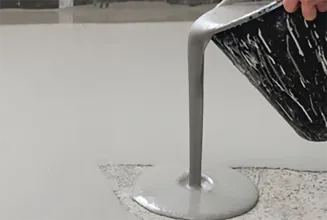
Dec . 07, 2024 01:14 Back to list
cement adhesive additive
The Importance of Cement Adhesive Additives in Modern Construction
In the ever-evolving world of construction, the quest for durability and efficiency drives the development of new materials and techniques. Among these innovations, cement adhesives and additives play a crucial role in enhancing the overall performance of construction materials. By improving adhesion, workability, and longevity, these products have become indispensable in modern building practices.
Understanding Cement Adhesive Additives
Cement adhesive additives are chemical compounds that are mixed with cement to improve its properties. These additives can be classified into several categories, each serving a unique purpose
1. Plasticizers These additives reduce the water requirement in cement mixtures, allowing for a smoother consistency without compromising strength. This is particularly useful in applications where a denser and more uniform mix is desired.
2. Retarders By slowing down the setting time of cement, retarders allow more time for workability and positioning, which is critical in larger construction projects. This extended work time helps prevent premature setting that can lead to uneven application and compromised structural integrity.
3. Accelerators Conversely, accelerators fast-track the setting process. In cold weather, where traditional cement may set too slowly, these additives can ensure timely project completion by reducing downtime.
4. Bonding Agents These substances enhance the bonding strength between the cement and other building materials (like tiles or bricks), ensuring a stronger and more durable finish that can withstand the stresses of daily use.
Enhancing Adhesion and Strength
cement adhesive additive

One of the primary benefits of using cement adhesive additives is the significant improvement in adhesion strength. In projects involving tile installations, masonry, or even concrete overlays, the adhesion properties of the cement can determine the longevity and reliability of the application. Additives specifically designed to improve bonding can reduce the risk of delamination and ensure that materials remain securely in place over time.
Additionally, cement-based adhesives are designed to accommodate movement and stress in building structures. This is particularly important in areas subjected to temperature fluctuations, moisture variations, and seismic activity. By reinforcing the cement’s flexibility and resistance to cracking, additives can help prolong the lifespan of structures, thereby reducing maintenance costs and enhancing safety.
Sustainability in Construction
With an increasing emphasis on sustainability in construction, cement adhesive additives contribute to more eco-friendly building practices. Many modern additives are formulated to reduce the carbon footprint of construction projects. For instance, some products utilize recycled materials or are designed to lower the overall cement content needed without sacrificing performance. This not only conserves natural resources but also addresses environmental concerns related to cement production.
Moreover, by improving the durability of cement applications, these additives lead to longer-lasting structures that require fewer repairs, ultimately reducing material waste and environmental impact.
Conclusion
As the construction industry continues to face challenges around efficiency, performance, and sustainability, the role of cement adhesive additives cannot be overstated. By improving adhesion, workability, and environmental impact, these additives are integral to creating structures that are not only strong and resilient but also environmentally friendly.
Incorporating the right cement adhesive additives into construction practices not only enhances the quality and durability of the work but also contributes to the broader goals of sustainability in the industry. As technology evolves, the development of new and innovative additives will continue to shape the future of construction, ensuring that we build structures that can withstand the test of time while minimizing our ecological footprint. Thus, understanding and utilizing these additives is essential for anyone involved in the construction process, from architects to contractors, ensuring that projects are completed with the highest standards of quality and sustainability.
-
Versatile Hpmc Uses in Different Industries
NewsJun.19,2025
-
Redispersible Powder's Role in Enhancing Durability of Construction Products
NewsJun.19,2025
-
Hydroxyethyl Cellulose Applications Driving Green Industrial Processes
NewsJun.19,2025
-
Exploring Different Redispersible Polymer Powder
NewsJun.19,2025
-
Choosing the Right Mortar Bonding Agent
NewsJun.19,2025
-
Applications and Significance of China Hpmc in Modern Industries
NewsJun.19,2025







